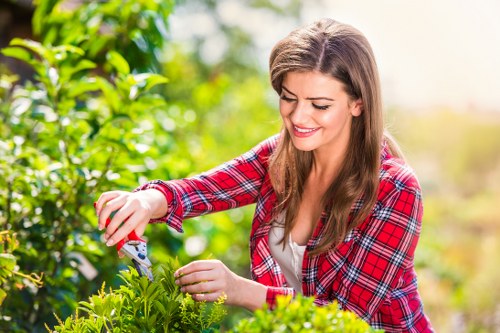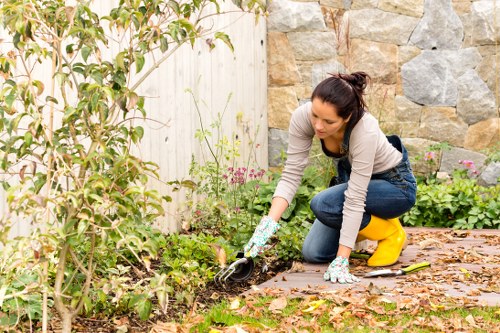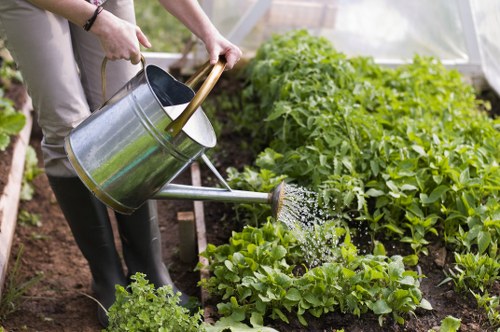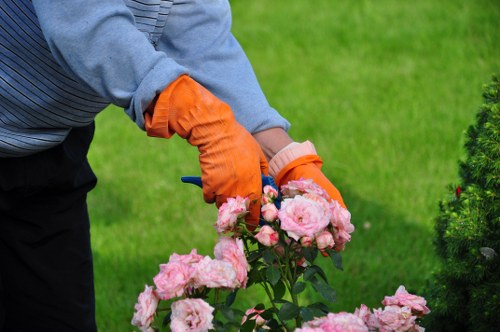Landscape Gardening in Bayswater: Transform Your Outdoor Space
Why Choose Landscape Gardening in Bayswater

Landscape gardening in Bayswater offers residents the opportunity to create beautiful, functional, and sustainable outdoor spaces tailored to the unique climate and soil conditions of the area. Whether you’re looking to enhance your home’s curb appeal, create a serene backyard retreat, or design a vibrant garden, professional landscape gardening services can help you achieve your vision.
By investing in landscape gardening, you not only improve the aesthetic appeal of your property but also increase its value. A well-designed garden can serve as a personal sanctuary, providing a perfect place for relaxation, entertainment, and connecting with nature.
Additionally, landscape gardening can contribute to environmental sustainability by incorporating native plants, efficient irrigation systems, and eco-friendly materials. This ensures that your garden thrives with minimal maintenance and environmental impact.
Understanding Bayswater’s Climate and Soil

Before embarking on a landscape gardening project in Bayswater, it’s essential to understand the local climate and soil conditions. Bayswater experiences a Mediterranean climate with hot, dry summers and mild, wet winters. This climate is ideal for a wide variety of plants, including drought-resistant species that require minimal watering.
The soil in Bayswater tends to be sandy with good drainage, which is beneficial for many garden plants. However, it can also be low in nutrients, so incorporating organic matter such as compost or mulch can enhance soil fertility and structure.
Understanding these environmental factors will help you select the right plants and design elements that will thrive in your specific garden conditions, ensuring a sustainable and low-maintenance landscape.
Choosing the Right Plants for Your Garden

Selecting the appropriate plants is a crucial aspect of landscape gardening. Opt for native and drought-tolerant species that are well-suited to Bayswater’s climate. Plants like lavender, rosemary, succulents, and agapanthus not only add beauty but also require less water and maintenance.
Incorporating a mix of evergreen and deciduous plants can provide year-round interest and structure to your garden. Flowering plants such as roses, daisies, and lantanas can add vibrant colors, while foliage plants like ferns and boxwood offer texture and depth.
Consider the mature size of plants to ensure they fit well within your garden’s space and do not overcrowd each other. Grouping plants with similar water and sunlight requirements can also simplify maintenance and promote a healthy garden environment.
Design Trends in Bayswater Landscape Gardening

Landscape gardening trends in Bayswater emphasize sustainability, minimalism, and the integration of outdoor living spaces. Modern garden designs often feature clean lines, native plantings, and the use of natural materials like stone and wood.
Water features, such as ponds, fountains, and rain gardens, are popular for adding a sense of tranquility and attracting wildlife. Additionally, incorporating outdoor lighting can enhance the ambiance and functionality of your garden during the evening hours.
Another trend is the use of vertical gardening and raised beds to maximize space and create visual interest. These design elements not only make gardens more accessible but also contribute to better plant health and easier maintenance.
Sustainable Gardening Practices

Sustainability is a key focus in landscape gardening in Bayswater. Implementing eco-friendly practices helps conserve water, reduce waste, and promote a healthier environment. Drip irrigation systems and rainwater harvesting are effective methods for optimizing water usage in your garden.
Using native plants reduces the need for excessive watering and fertilization, as these plants are adapted to the local climate. Additionally, incorporating compost and organic mulches improves soil health and supports beneficial microorganisms.
Creating habitats for local wildlife, such as birdhouses, bee hotels, and butterfly gardens, enhances biodiversity and contributes to the ecological balance of your garden.
Maintenance Tips for a Thriving Garden
Regular maintenance is essential to keep your landscape garden in Bayswater looking its best. Pruning, weeding, and deadheading are basic tasks that help maintain plant health and appearance. It’s important to schedule maintenance based on the specific needs of your plants and the seasonal changes in the area.
Implementing a mulching routine can help retain soil moisture, suppress weeds, and regulate soil temperature. Similarly, proper fertilization ensures that your plants receive the necessary nutrients for growth and flowering.
Regular inspections for pests and diseases will allow you to address issues promptly, preventing them from spreading and causing significant damage to your garden.
Hiring Professional Landscapers in Bayswater
While some homeowners enjoy the process of DIY gardening, hiring professional landscapers in Bayswater can bring expertise and efficiency to your landscape project. Professionals have the knowledge and experience to create customized garden designs that meet your specific needs and preferences.
Professional landscapers can assist with plant selection, ensuring that your garden is both aesthetically pleasing and sustainable. They can also handle complex tasks such as irrigation system installation, hardscape construction, and lighting design, saving you time and effort.
Moreover, professionals can provide valuable advice on garden maintenance and help you implement long-term strategies for a thriving and resilient garden.
DIY vs. Professional Landscape Gardening
Deciding between DIY and professional landscape gardening depends on several factors, including your budget, time, and expertise. While DIY projects can be cost-effective and personally satisfying, they may require a significant time commitment and a learning curve.
On the other hand, hiring professionals can ensure that your garden is designed and executed efficiently, with high-quality results. Professionals can also provide ongoing maintenance services, ensuring that your garden remains beautiful and healthy throughout the year.
Consider your personal preferences, available resources, and the complexity of your garden project when making this decision. In many cases, a combination of DIY efforts and professional assistance can yield the best results.
Budgeting for Your Garden Project

Creating a budget is a critical step in any landscape gardening project. Start by outlining your goals and priorities, determining which elements are essential and which can be added later. This approach helps you allocate funds effectively and avoid overspending.
Consider the costs of materials, plants, labor, and any additional services you may require. It’s also wise to set aside a contingency fund for unexpected expenses that may arise during the project.
Researching and obtaining multiple quotes from different landscapers can help you find competitive rates and choose a professional who fits your budget and quality expectations.
Enhancing Curb Appeal with Landscape Gardening
First impressions matter, and enhancing your home’s curb appeal through landscape gardening can significantly impact its overall attractiveness. A well-maintained front garden with lush greenery, colorful flowers, and strategic lighting can create a welcoming atmosphere for visitors.
Key elements to focus on include the driveway, walkway, plant beds, and outdoor lighting. Incorporating elements like flower borders, decorative stones, and water features can add visual interest and sophistication to your garden.
Maintaining a tidy and organized garden area not only improves aesthetics but also reflects positively on your overall property upkeep.
Seasonal Gardening in Bayswater
Adapting your gardening practices to the changing seasons is essential for maintaining a vibrant and healthy landscape garden in Bayswater. Each season presents unique challenges and opportunities for garden care and plant selection.
In spring, focus on planting new flowers, mulching, and preparing garden beds for the growing season. Summer requires diligent watering, pest control, and pruning to keep plants thriving in the heat.
Autumn is the time for harvesting, composting, and preparing plants for the cooler months, while winter involves protecting sensitive plants and planning for the next growing season.
Common Challenges in Landscape Gardening and How to Overcome Them
Landscape gardening in Bayswater can present several challenges, including water scarcity, pest infestations, and nutrient-poor soil. Addressing these challenges requires proactive planning and the implementation of effective solutions.
Water scarcity can be managed by selecting drought-tolerant plants, installing efficient irrigation systems, and using mulches to conserve moisture. Pest infestations can be controlled through integrated pest management practices, including the use of natural predators and organic treatments.
Improving soil quality with compost and organic fertilizers ensures that plants receive the necessary nutrients for healthy growth, reducing the risk of plant stress and disease.
Integrating Hardscapes into Your Garden Design
Hardscapes are non-plant elements that add structure and functionality to your landscape garden. Common hardscape features include patios, walkways, retaining walls, and garden structures like pergolas and gazebos.
Integrating hardscapes into your garden design enhances the overall layout and provides areas for outdoor living and entertainment. Materials such as stone, brick, and wood can complement the natural elements of your garden, creating a harmonious and balanced environment.
Properly designed hardscapes also improve accessibility and organization within the garden, allowing you to navigate and enjoy your outdoor space with ease.
Incorporating Sustainable Features into Your Garden
Sustainability is increasingly important in landscape gardening. Incorporating sustainable features not only benefits the environment but also creates a resilient and low-maintenance garden.
Features such as rainwater harvesting systems, compost bins, and solar lighting contribute to eco-friendly gardening practices. Additionally, using recycled or locally sourced materials for hardscapes reduces waste and supports the local economy.
Creating habitats for native wildlife, such as birds, bees, and butterflies, promotes biodiversity and supports the ecological health of your garden.
Creating a Low-Maintenance Garden
For those with busy lifestyles, designing a low-maintenance garden is essential. Choose plants that require minimal care, such as native species and perennials that are well-adapted to Bayswater’s climate.
Implementing efficient irrigation systems and mulching can reduce the time and effort needed for watering and weeding. Additionally, incorporating hardscape elements like gravel paths and rock gardens minimizes the need for regular maintenance.
Regular but simple maintenance routines, such as occasional pruning and seasonal clean-ups, help keep your garden looking its best without requiring extensive time or resources.
Maximizing Small Garden Spaces
Even with limited space, you can create a beautiful and functional garden in Bayswater. Maximizing small garden spaces involves thoughtful planning and creative design solutions.
Vertical gardening is an excellent way to add greenery without taking up much ground space. Using trellises, wall-mounted planters, and hanging baskets can create a lush, layered look in a compact area.
Incorporating multi-functional elements, such as seating with built-in storage or compact outdoor furniture, helps make the most of your available space while maintaining a tidy and organized garden.
Choosing the Right Outdoor Furniture and Accessories
Outdoor furniture and accessories play a significant role in enhancing the comfort and functionality of your landscape garden. Selecting pieces that are both stylish and durable ensures that your garden remains inviting and practical.
Consider materials that are weather-resistant and easy to maintain, such as wrought iron, teak, and synthetic wicker. Comfortable seating, dining sets, and lounging areas provide spaces for relaxation and social gatherings.
Accessorize your garden with items like outdoor rugs, cushions, and decorative lighting to add color, texture, and ambiance. These elements can transform your garden into a welcoming outdoor living space.
Enhancing Privacy in Your Garden
Creating a sense of privacy in your landscape garden allows you to enjoy your outdoor space without disturbances. There are several strategies to enhance privacy, including the use of plant barriers, screens, and structures.
Planting tall shrubs, trees, or hedges along the perimeter of your garden can provide a natural barrier that blocks unwanted views and noise. Bamboo screens and trellises are effective for creating secluded areas within your garden.
Incorporating fences, walls, or pergolas with climbing plants can also enhance privacy while adding architectural interest to your garden design.
Integrating Lighting for a Stunning Night Garden
Outdoor lighting is essential for extending the usability of your garden into the evening hours and enhancing its visual appeal at night. Strategically placed lights can highlight key features, create ambiance, and improve safety.
Pathway lights guide visitors through your garden, while spotlights can accentuate trees, sculptures, and water features. String lights and lanterns add a warm and inviting atmosphere to seating areas and patios.
Solar-powered lighting options are an eco-friendly choice that reduces energy consumption and simplifies installation. Proper lighting design ensures that your garden remains beautiful and functional after dark.
Selecting the Right Garden Tools and Equipment
Having the right garden tools and equipment is essential for maintaining a healthy and attractive landscape garden. Invest in high-quality tools that are durable and comfortable to use, making gardening tasks more efficient and enjoyable.
Basic tools include a sturdy shovel, pruning shears, a garden fork, and a watering can or hose. For more advanced gardening, consider tools like a rototiller, leaf blower, and lawnmower.
Proper maintenance of your tools, such as regular cleaning and sharpening, ensures they remain in good condition and extend their lifespan, allowing you to care for your garden effectively.
Implementing Smart Irrigation Systems
Efficient water management is crucial in landscape gardening, especially in areas like Bayswater where water conservation is important. Smart irrigation systems can optimize water usage, ensuring that plants receive the right amount of moisture without waste.
Smart irrigation systems use weather data, soil moisture sensors, and programmable controllers to adjust watering schedules based on real-time conditions. This ensures that your garden is watered efficiently, reducing water consumption and preventing overwatering.
Additionally, drip irrigation systems deliver water directly to the plant roots, minimizing evaporation and runoff. Investing in smart irrigation technology contributes to a sustainable and low-maintenance garden.
Creating a Focal Point in Your Garden
A focal point draws attention and creates visual interest in your landscape garden. It serves as the centerpiece that anchors your garden design and guides the eye through the space.
Common focal points include architectural elements like statues, fountains, or pergolas, as well as natural features such as specimen trees, large flower beds, or water features. Selecting a focal point that complements your garden’s overall design enhances its aesthetic appeal.
Positioning the focal point strategically, such as at the end of a pathway or within a central area, ensures that it becomes a standout feature that defines your garden’s character.
Using Color and Texture in Garden Design
Color and texture are powerful tools in landscape gardening that can create mood, highlight areas, and add depth to your garden design. Thoughtful use of these elements enhances the visual appeal and overall harmony of your outdoor space.
Incorporate a variety of colors through flowers, foliage, and garden accessories. Combining different hues can create contrast and interest, while a cohesive color palette ensures a unified look. Seasonal color changes keep the garden vibrant throughout the year.
Texture adds dimension and tactile interest to your garden. Mix different plant textures, such as soft grasses, rigid succulents, and delicate flowers, to create a layered and dynamic landscape. Incorporating hardscape textures, like smooth stones and rough bark, further enhances the garden’s visual richness.
Planning for Garden Expansion and Future Growth
When designing your landscape garden, it’s important to consider future expansion and the long-term growth of plants. Planning ahead ensures that your garden remains functional and aesthetically pleasing as it evolves.
Choose plant species that have similar growth rates and patterns to maintain balance in your garden design. Allow adequate spacing for plants to reach their mature size without overcrowding.
Incorporate flexible design elements, such as modular garden beds and adjustable irrigation systems, that can accommodate changes and additions over time. Regularly reassessing your garden’s layout and making necessary adjustments helps sustain its beauty and functionality for years to come.
Encouraging Wildlife in Your Garden
Creating a garden that attracts wildlife enhances biodiversity and creates a lively, dynamic environment. Wildlife-friendly gardens support local ecosystems and provide opportunities to observe birds, bees, butterflies, and other beneficial creatures.
Planting a variety of native flowers, shrubs, and trees provides food and shelter for wildlife. Incorporate elements like bird feeders, water sources, and nesting boxes to further encourage animal visits.
Avoid using pesticides and herbicides, opting instead for natural pest control methods to protect wildlife and maintain a healthy garden ecosystem.
Maximizing Shade and Sunlight in Your Garden
Balancing shade and sunlight is essential for a thriving landscape garden. Different plants have varying light requirements, so understanding the sunlight patterns in your garden helps in selecting the right plants and optimizing their growth.
Incorporate shade structures like pergolas, trellises, and shade sails to provide relief from the intense Bayswater sun. Planting trees and tall shrubs can also create natural shade, protecting more delicate plants and creating comfortable outdoor living areas.
Position plants according to their light needs, ensuring that sun-loving plants receive ample sunlight while shade-tolerant species thrive in shaded areas. This strategic placement promotes healthy plant growth and a balanced garden environment.
Finalizing Your Landscape Garden Design
Once you’ve planned all the elements of your landscape garden, it’s time to finalize the design and begin implementation. Review your garden layout, ensuring that all components are harmoniously integrated and aligned with your overall vision.
Ensure that pathways, seating areas, plant beds, and hardscape features are positioned correctly and that there is a logical flow throughout the garden. Make any necessary adjustments to balance aesthetics, functionality, and sustainability.
With a finalized design, you can begin the installation process, either by yourself or with the assistance of professional landscapers. Proper execution of the design plan ensures that your landscape garden in Bayswater becomes a beautiful and enduring outdoor space.
Contact Us to Begin Your Landscape Transformation
Ready to transform your outdoor space with expert landscape gardening in Bayswater? Our team of professional landscapers is here to help you create the garden of your dreams. From design and plant selection to installation and maintenance, we provide comprehensive services tailored to your needs.
Contact us today to schedule a consultation and take the first step towards a stunning and sustainable landscape garden.